The best synthetic puffer jackets: feather-free padding to keep out the winter chill
We've tested the best synthetic puffer jackets, which offer excellent insulation at a friendly price point
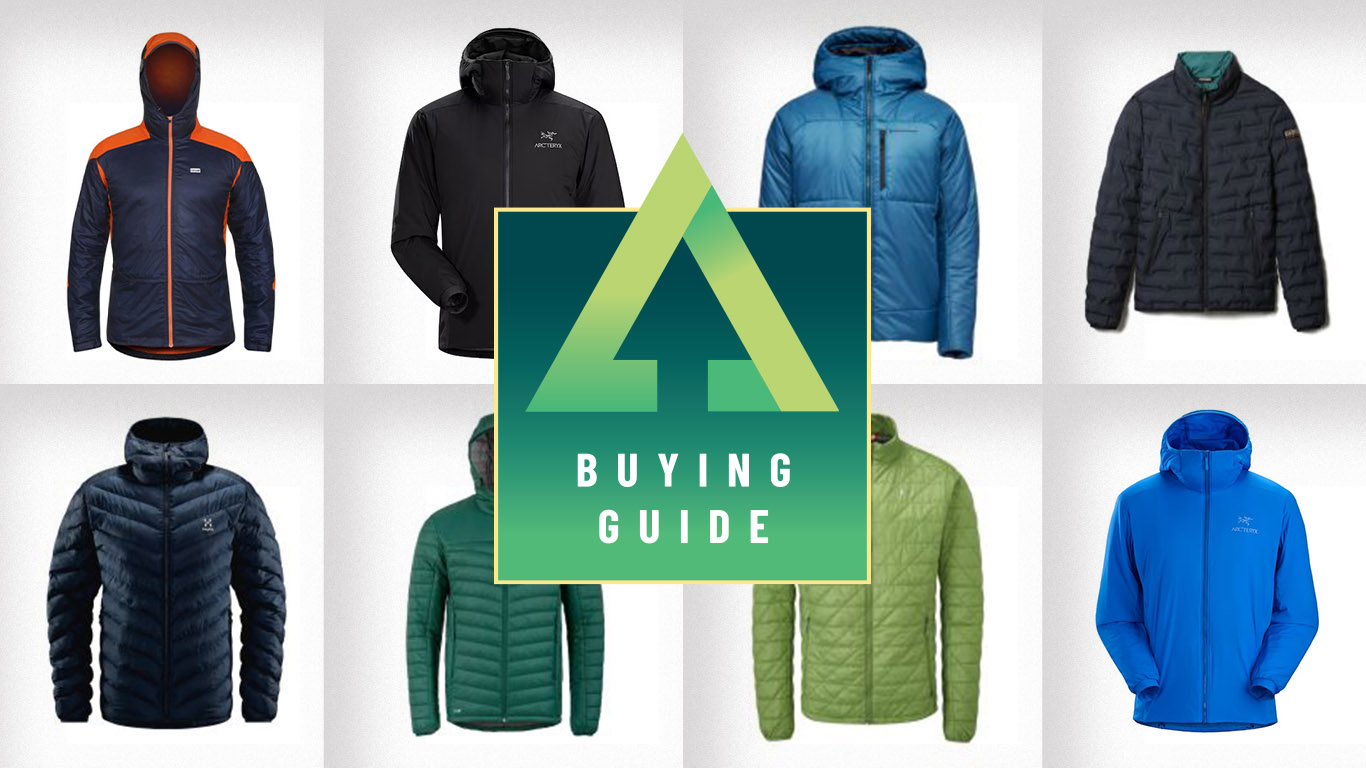
While many outdoor enthusiasts swear by their down jacket, the best synthetic puffer jackets are often cheaper, and more suited to wet conditions. In the depths of winter, having one of the best synthetic puffers can help give you the extra insulation you need for the coldest of expeditions, without breaking the bank.
Of course, a down jacket does the same job, but they are generally much more expensive than all but the very the best synthetic puffers. Utilizing down-mimicking polyester fibres, synthetic puffers boast similar insulating qualities to down at a fraction of the price. Most puffers also retain their thermal properties when wet, unlike many down jackets.
What the best down jackets and the finest synthetic jackets have in common is style. You're just as likely to see a quality puffer on the street as you are on the peaks and ridges, so universal is the appeal of their pleasing warmth and stylish aesthetics.
While all the puffers featured here have street-ready looks, they're also high-performing jackets that won't let you down in the backcountry. You might also want to check out our guide to the best women's down jackets and puffers, which are better suited to the female form.
The quick list
This is our quick list, a brief overview of the best synthetic puffer jackets available today. To find out more about each jacket, see our more detailed write ups further down the page in this guide.
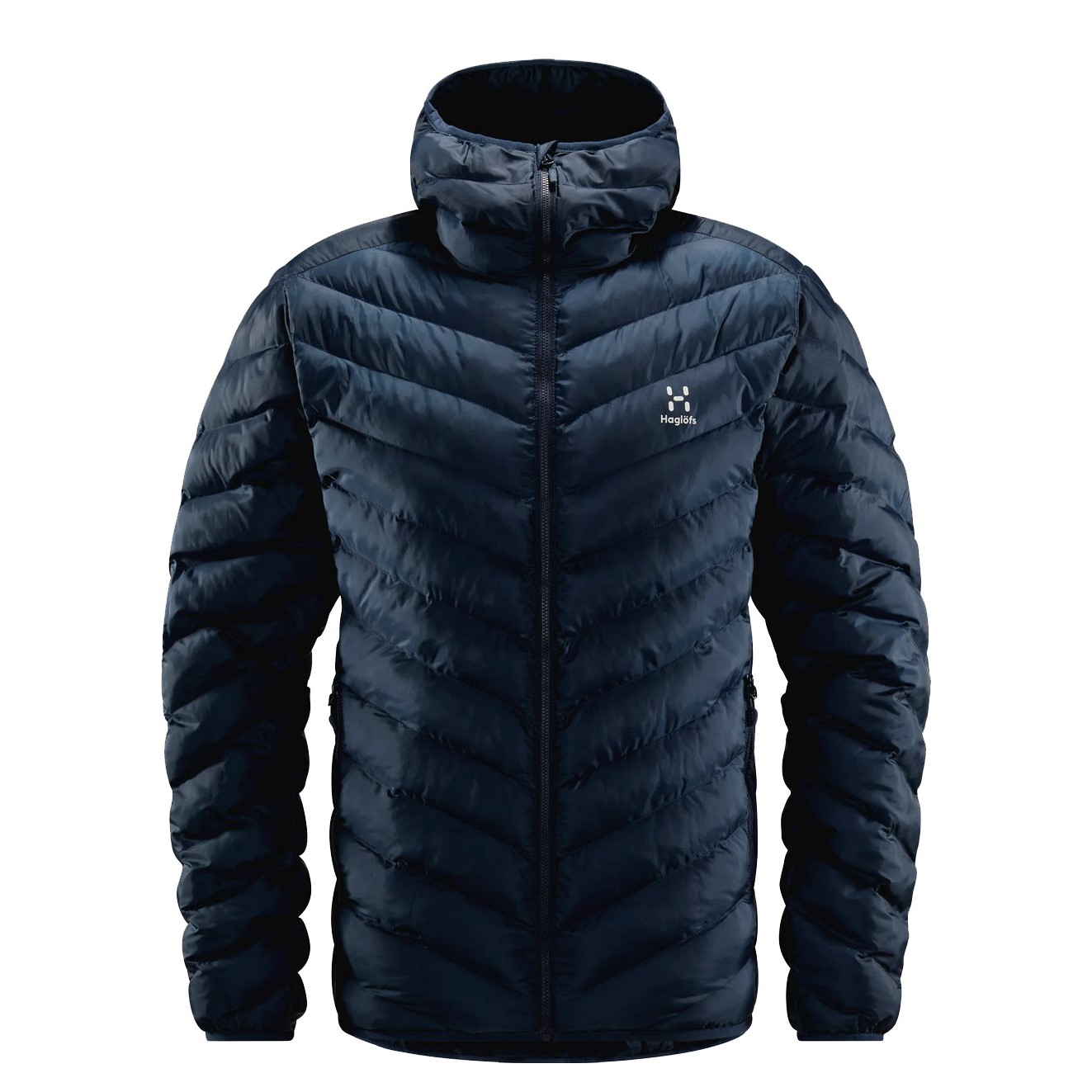
The best all rounder
A distinctive and classy puffer jacket that's as at home in the backcountry as on the streets
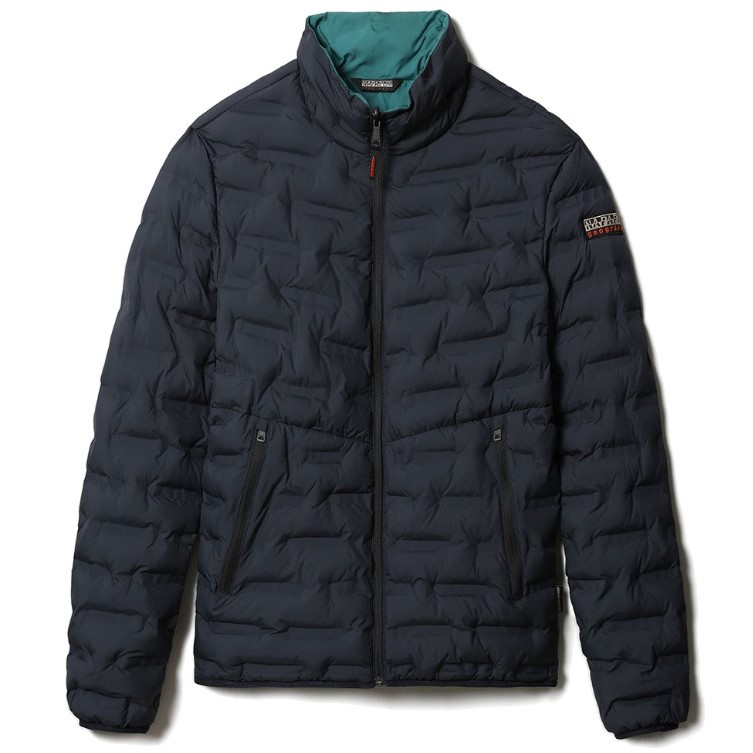
The best for style
A flattering, sleek fit that makes it smart enough to wear down the pub
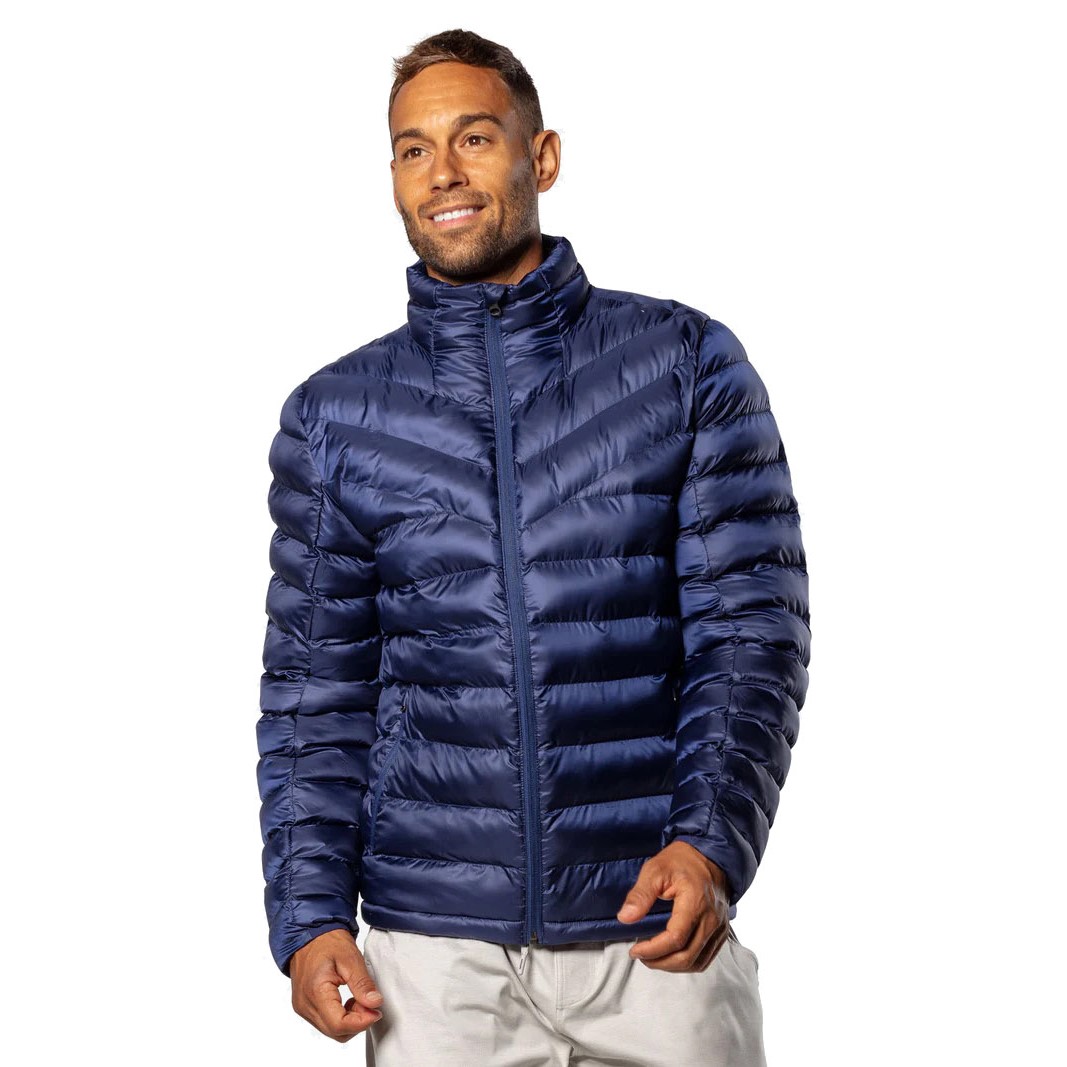
The best for warmth to weight
A lightweight, warm and versatile down alternative jacket
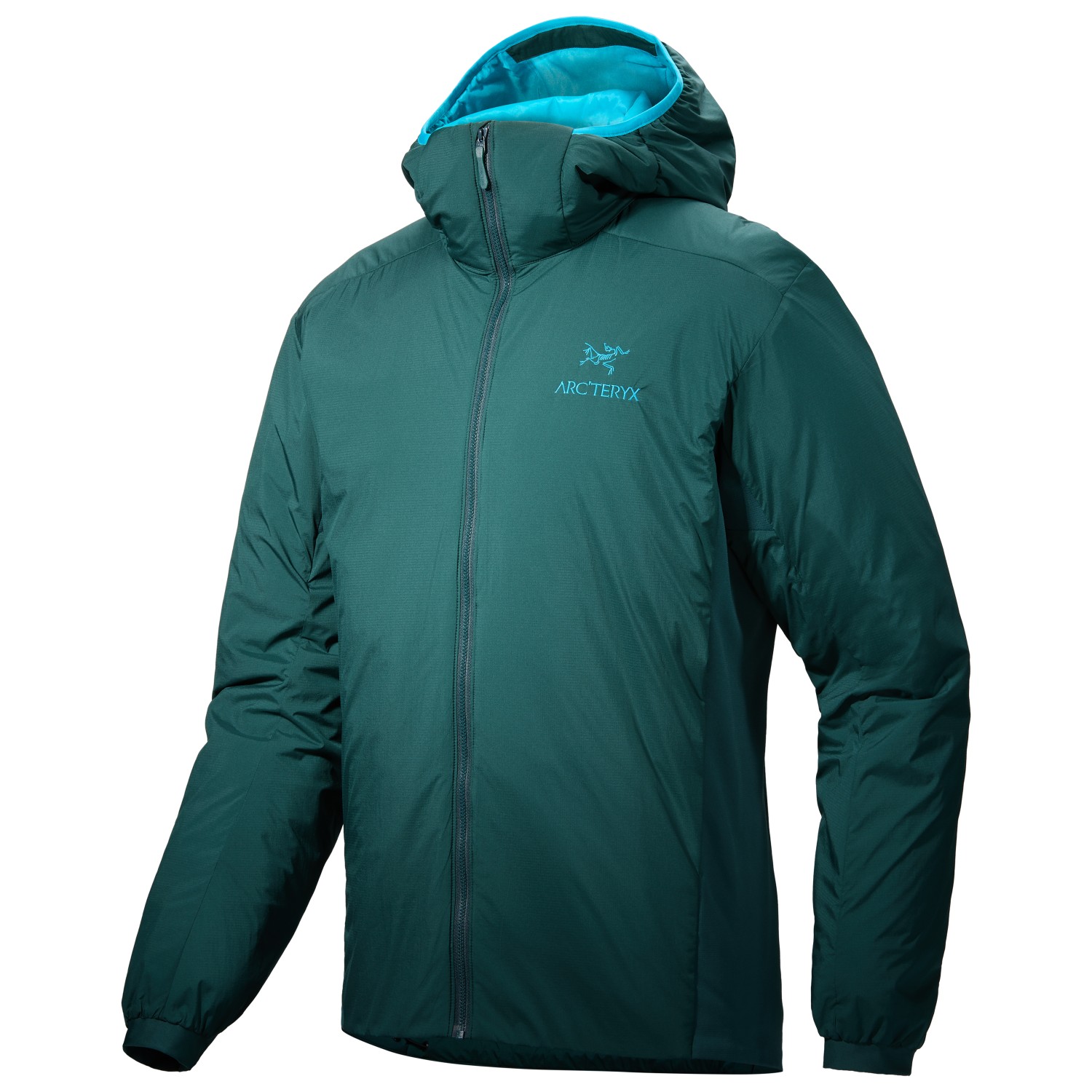
The best for all day wear
A great all-day midlayer for winter pursuits that will keep you warm without getting sweaty
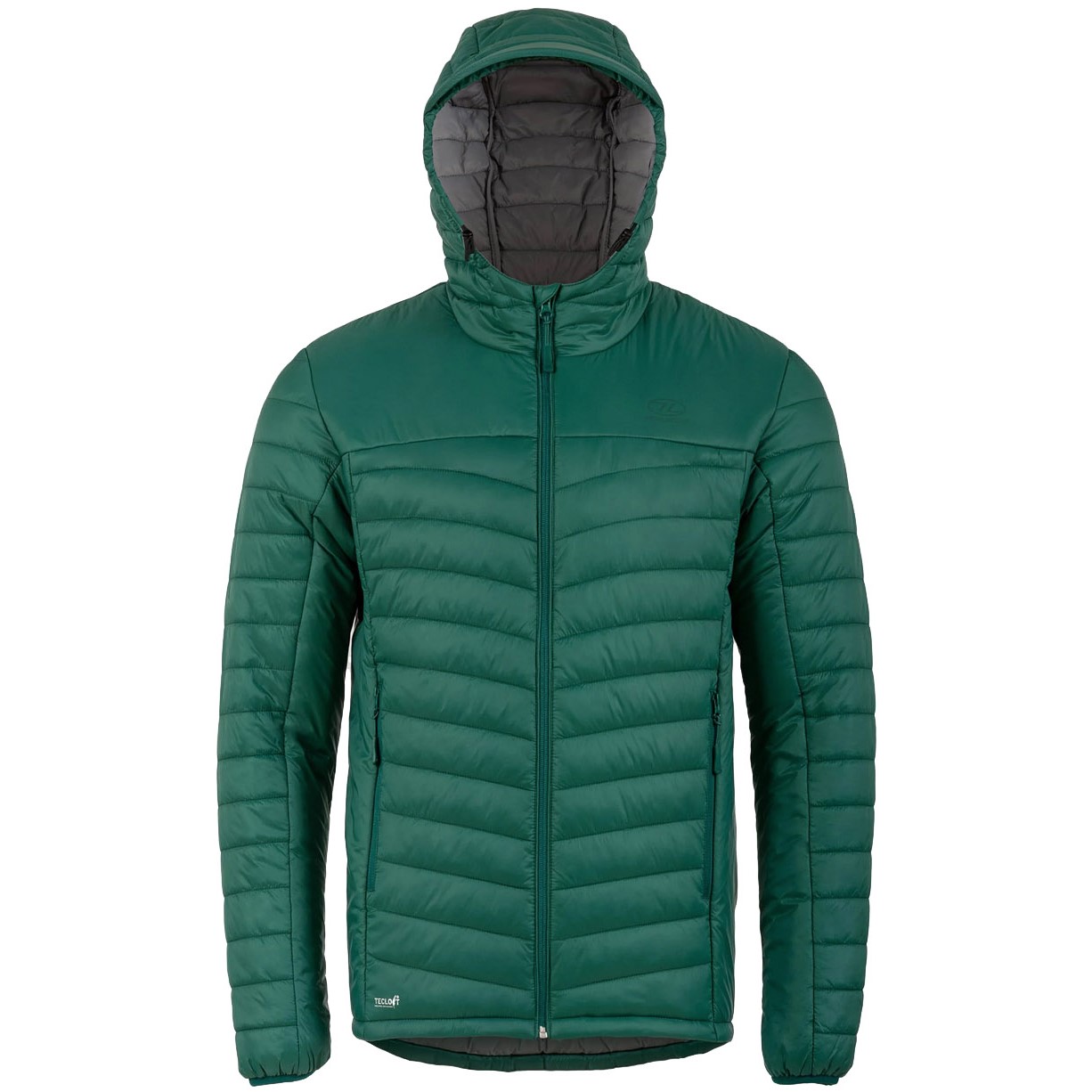
The best value
A great value insulating layer for hiking, camping and general outdoor use
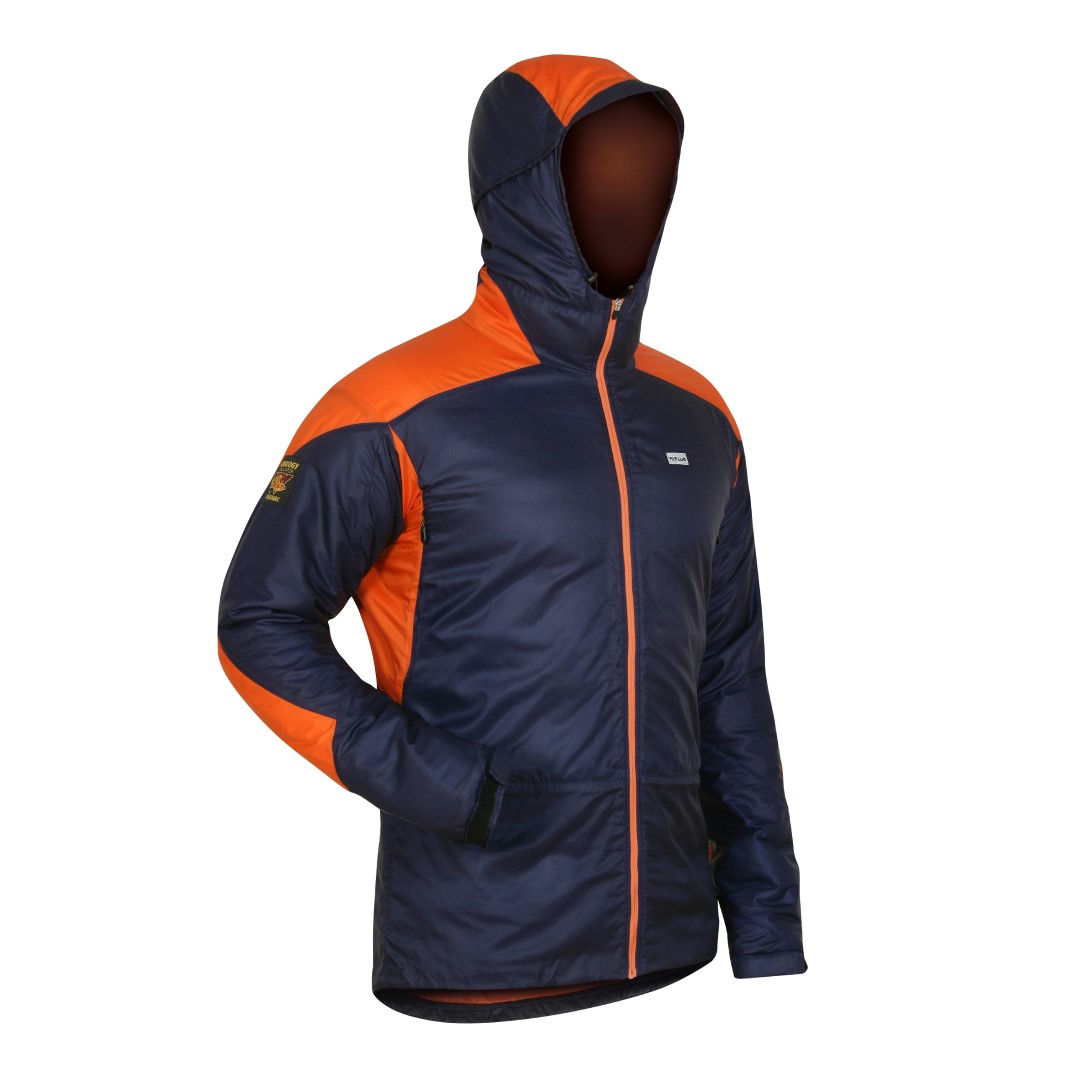
The best for mountain missions
Warm and protective yet reasonably lightweight and packable too, the versatile Torres Activo works for a multitude of uses
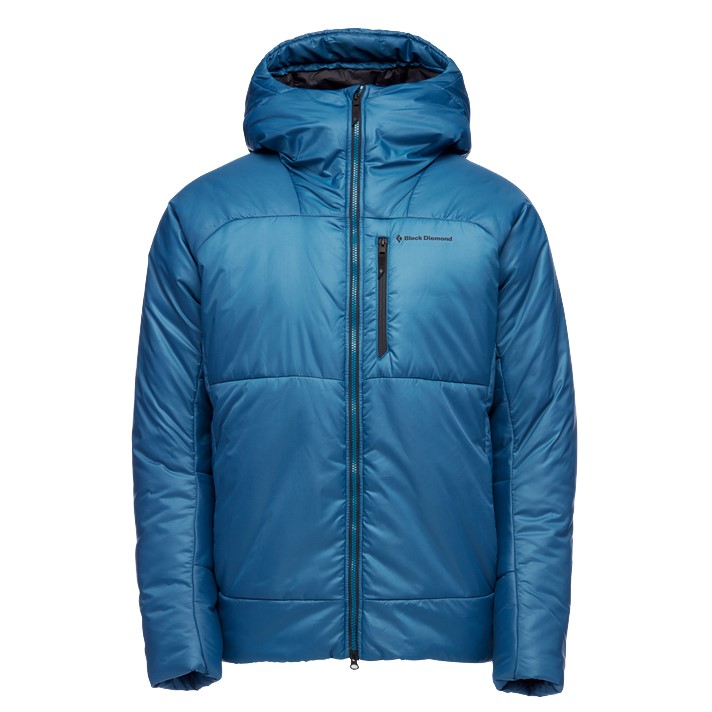
The best for climbers
A beast of a belay jacket that feels extremely warm and protective
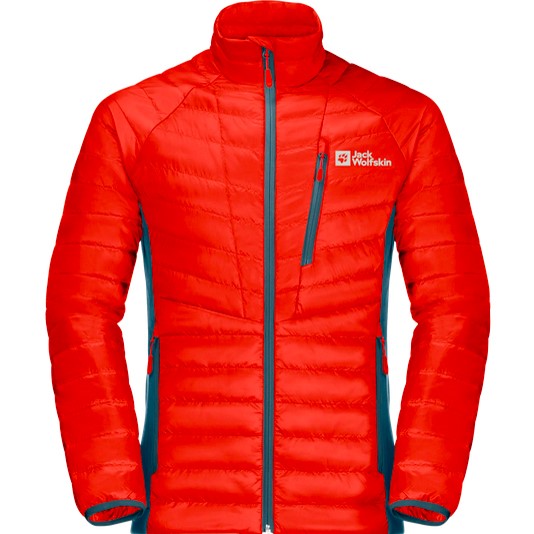
The best eco option
A lightweight puffer made with recycled synthetic material that fuses fashion with functionality

Matt Jones has been testing kit in the field for nearly a decade. Having worked for both the Ramblers and the Scouts, he knows one or two things about walking and camping, and loves all things adventure, particularly long-distance backpacking, wild camping and climbing mountains. He’s based in Snowdonia and last year thru-hiked the Cambrian Way, which runs for 298 miles from Cardiff to Conwy, with a total ascent of 73,700 feet – that’s nearly 2½ times the height of Everest.
The best synthetic puffer jackets we recommend in 2025
You can trust Advnture
The best all rounder

1. Haglöfs Särna Mimic Hood
Our expert review:
Specifications
Reasons to buy
Reasons to avoid
The Särna Mimic Hood jacket from Swedish brand Haglöfs is a superb lightweight synthetic jacket. The fill is a fully recycled polyester that gives it a down-like feel, hence the Mimic in the name. Crucially, this light and lofty fibre has the advantage that it retains its thermal properties when wet, though it's not quite as packable as natural down. The outer fabric is also polyester, with a DWR treatment for fending off light rain. All the fabrics here are bluesign approved.
Its slanted baffle design gives it a distinctive aesthetic, while the inclusion of a hood makes it a good option for winter adventures. Haglöfs say it's at home on the mountains and in urban environments, something we agree with whole heartedly. Weighing in at 476g, it's neither ultralight nor too heavy. The zippered hand warmer pockets are a nice inclusion, though chest pockets would have been preferable when wearing a backpack. For something more lightweight, the Särna Mimic is also available without a hood.
The best for style
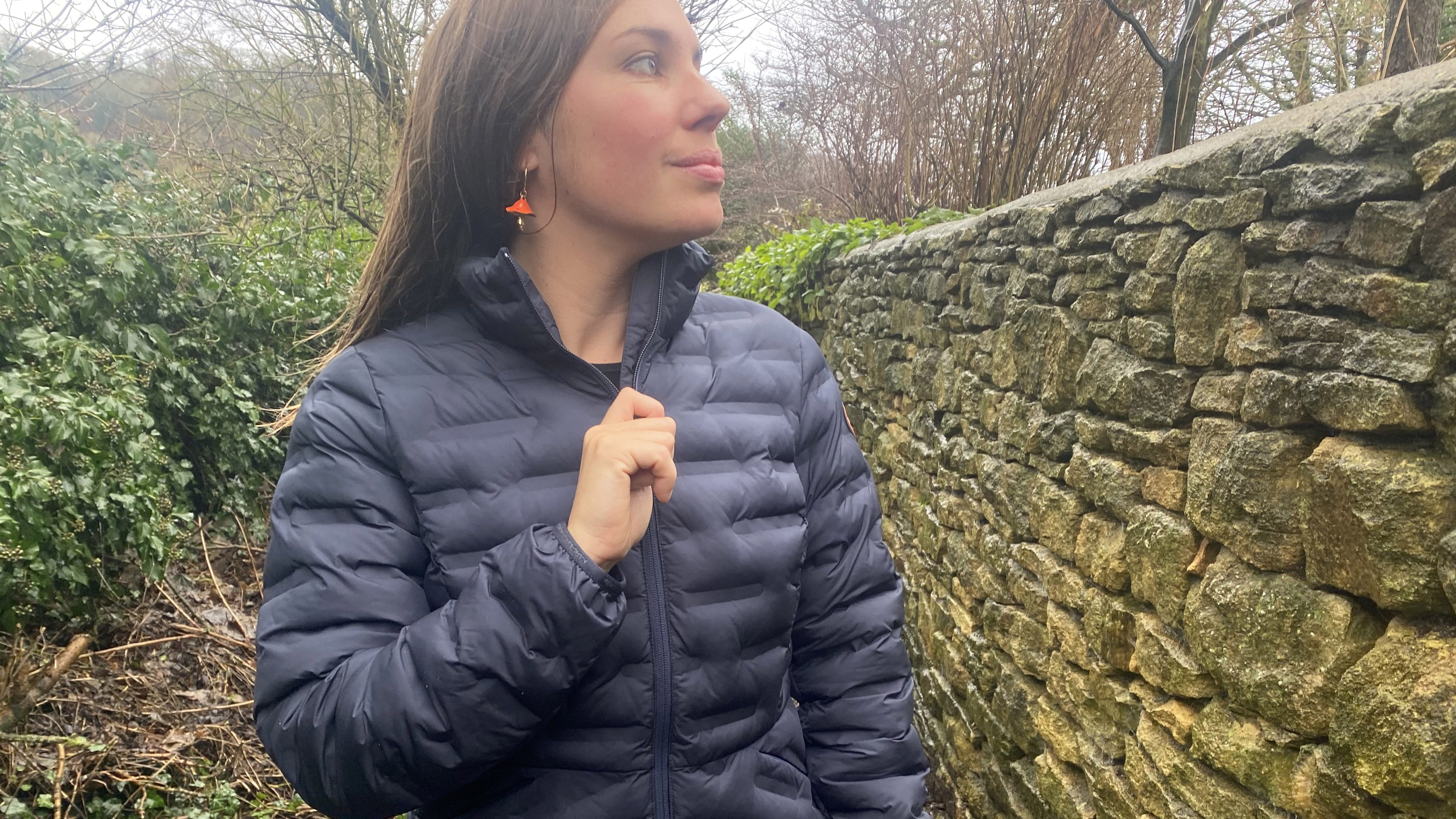
2. Napapijri Alvar Short Jacket
Our expert review:
Specifications
Reasons to buy
Reasons to avoid
Napapijri have been making Arctic-ready jackets for 30 years, so they know a thing or two about keeping your core cosy. We reckon Alvar jacket is a very good crowd-pleaser of a mid layer – it’s stuffed with synthetic insulation that’s lightweight but traps in warmth quickly, while a water-resistant outer material repels rain. We like the high-cut neck, which adds warmth and feels soft against your face. Good as a standalone jacket in autumn or under a waterproof shell in winter for hiking and skiing, and the sleek and simple cut is smart and flattering enough to wear casually, so you’ll get more bang for your buck.
While good looks shouldn’t be top of your shopping list when you buy an insulated jacket, they’re always a plus – and the Alvar comes in smart neutral colours and with a flattering, sleek fit that make it smart enough to wear down the pub or even as a standalone jacket to work when you aren’t in the great outdoors.
The best for warmth to weight

Specifications
Reasons to buy
Reasons to avoid
The Nathan Sports BFF Puffer Jacket is a down-alternative puffy jacket that’s great as a versatile outerlayer. The 600 fill power alternative down is lightweight, recycled and water-resistant, while the Pertex Shield shell is water and wind resistant. An interior chest pocket is zippered so valuables stay safe, and two zippered hand pockets on the jacket are lined with a soft fleece and ideal for keep hands cozy. This alternative-down jacket works well for daily use in colder climates and also as a warm travel companion, but annoyingly, a hooded version of the Nathan Sports BFF Puffer Jacket is not yet available.
While this jacket does have a sporty look when paired with running tights or snow pants, when worn with jeans and even with dress pants, the Nathan BFF puffy comes in classic color options and is versatile enough to wear out to dinner or on the town. When the weather does turn more chilly, the elastic-bound cuffs create a snug fit around the wrists so wind doesn’t get through.
Read our full Nathan Sports BFF Puffer Jacket review
The best for all day wear
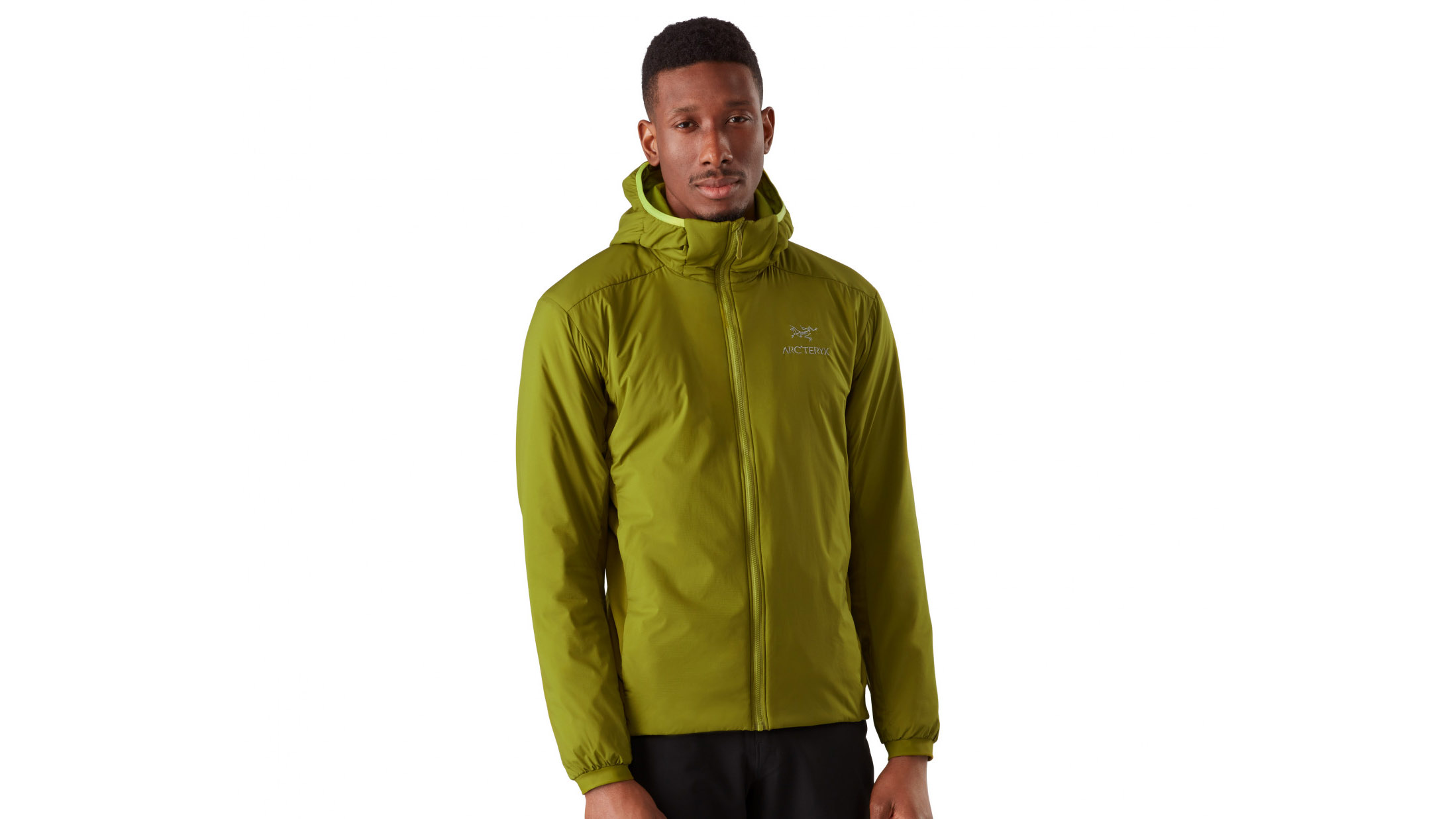
4. Arc’teryx Atom LT Hoody
Our expert review:
Specifications
Reasons to buy
Reasons to avoid
Arc’teryx’s Atom LT Hoody has been a staple of the Canadian brand’s product range for multiple seasons. The secret to its enduring popularity is its versatility. It isn’t the warmest synthetic jacket around, but instead balances a general sense of cosiness with surprisingly good breathability. That’s down to its hybrid construction, with zoned panels of Coreloft Compact insulation combined with air-permeable side stretch fleece panels. There’s a soft but durable face fabric with a water repellent treatment too, making it a bit more resistant to external precipitation. But it really comes into its own when used as a midlayer for stop/start activities – which might include anything from winter snow sports to cold-weather mountaineering. In that context, it’s a superlative wear-all-day layer that manages to keep you warm without overheating. The super soft fabrics and accommodating fit also give high levels of comfort and articulation. All in all, it’s a very wearable layer, and we suspect many outdoorsy types would stick this on for more casual use too.
The best value
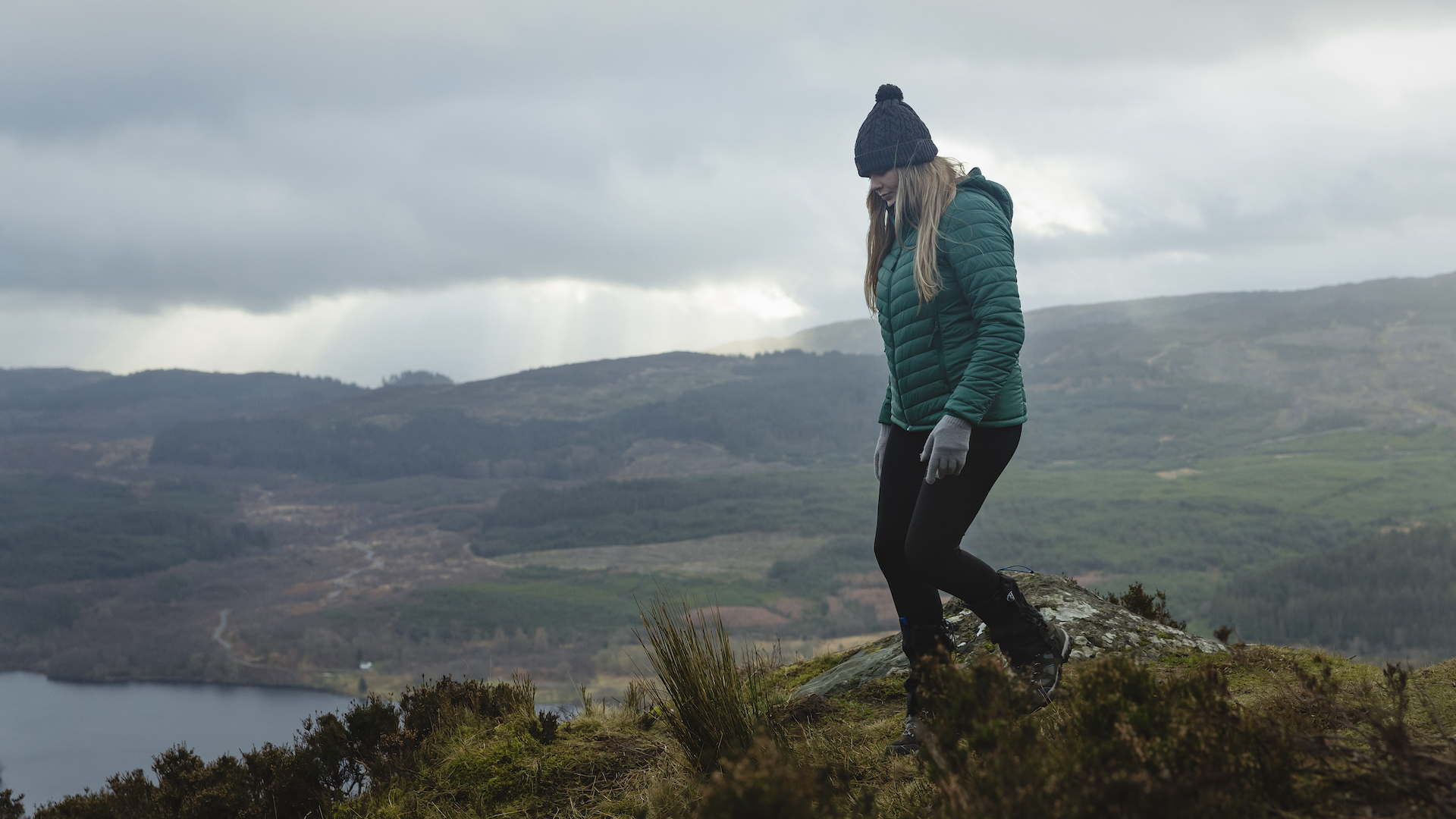
Specifications
Reasons to buy
Reasons to avoid
Simple but effective, the great fit of this versatile jacket means it works pretty well as a standalone puffy or a midlayer, with synthetic fill for good moisture-resistance and a hard-wearing nylon shell for added durability. With a price tag that isn’t too scary, plus a decent warmth-to-weight ratio and a good set of features, it makes a useful standalone insulating layer for chilly days, and an equally practical midlayer when worn underneath a shell for wet and cold mountain adventures.
This isn’t the most high-performing jacket around, but the Tecloft synthetic fill – a continuous filament insulation made from 100% polyester – still provides a welcome boost of warmth whenever the mercury plunges.
All the zips are a reverse coil design for added water-resistance, with chunky zip pulls that are easy to grab with a gloved hand. The main zip only has a half baffle at the top of the jacket though. This ensures no chin irritation, but if it ran all the way to the bottom of the zip, you’d get better protection from draughts and moisture. Lastly, the face fabric of the jacket is made from high-tenacity nylon, so in terms of resistance to abrasion, it should outperform cheaper polyester alternatives.
Read our full Highlander Lewis synthetic jacket review
The best for mountain missions
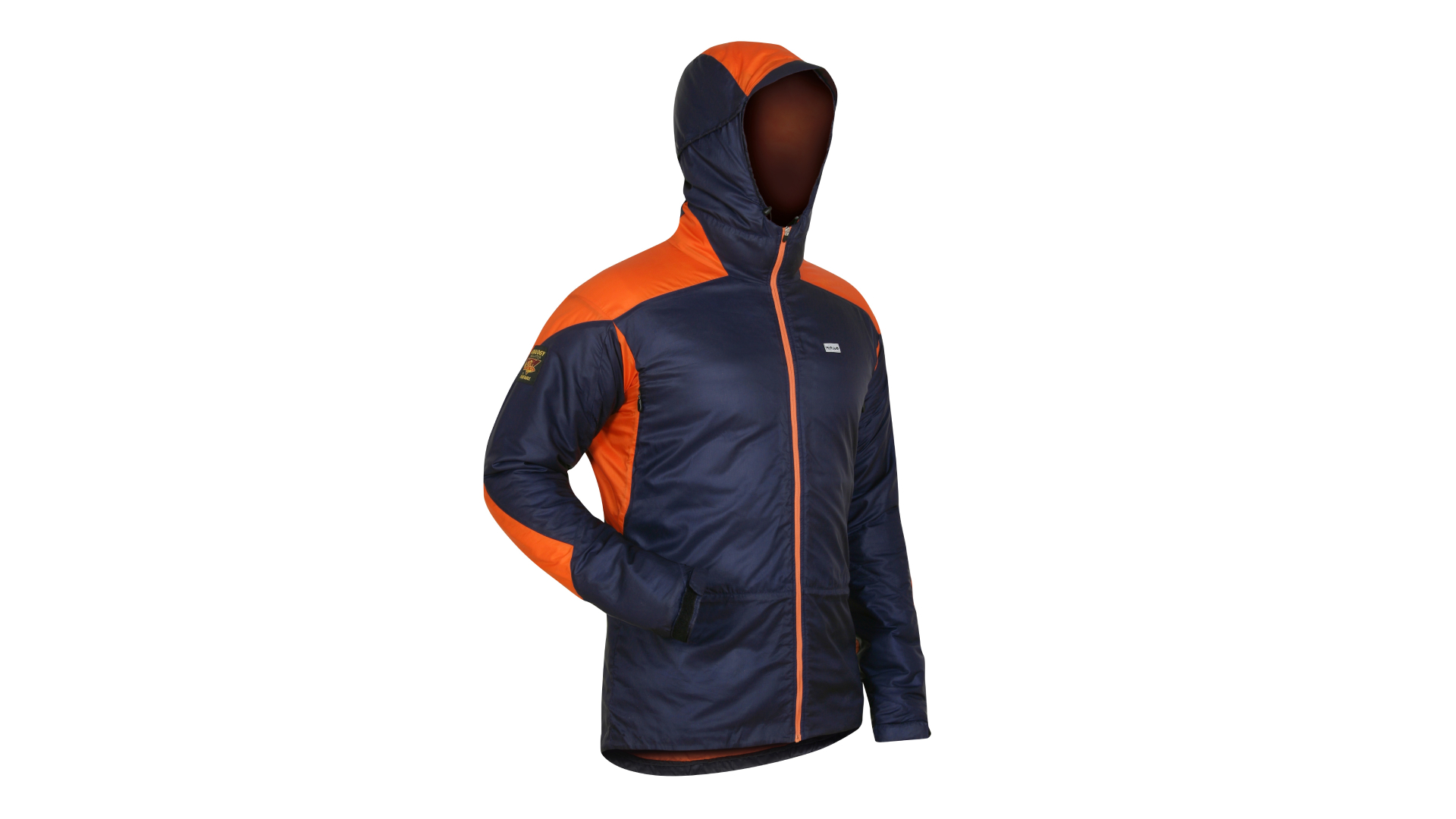
Specifications
Reasons to buy
Reasons to avoid
The Torres Activo can be regarded as the little brother of Páramo’s oversized Torres Medio jacket, a classic synthetic belay-style jacket that is designed to be thrown on over all your other layers, including a waterproof, providing instant block insulation in tough conditions. The Activo isn’t quite as warm or as heavy, but that makes it slightly more versatile, so it can be employed as a reasonably lightweight and packable extra layer for mountain missions, wild camps or cold days on the trail.
The 60g Nikwax Insulator fill has all the classic benefits of synthetic insulation: it is hard-wearing, quick-drying and stays warm when wet. You also get a great ‘halo’ peaked hood with a cutaway profile for improved peripheral vision, zipped side pockets that are placed high up so as to be harness or hipbelt friendly, and long arms with Velcro cuff tabs to really cinch in the sleeves, even over a pair of gloves. The windproof face fabric adds to the general feeling of all-round protection from the elements and is treated with a PFC-free Nikwax DWR to add weather resistance.
The best for climbers
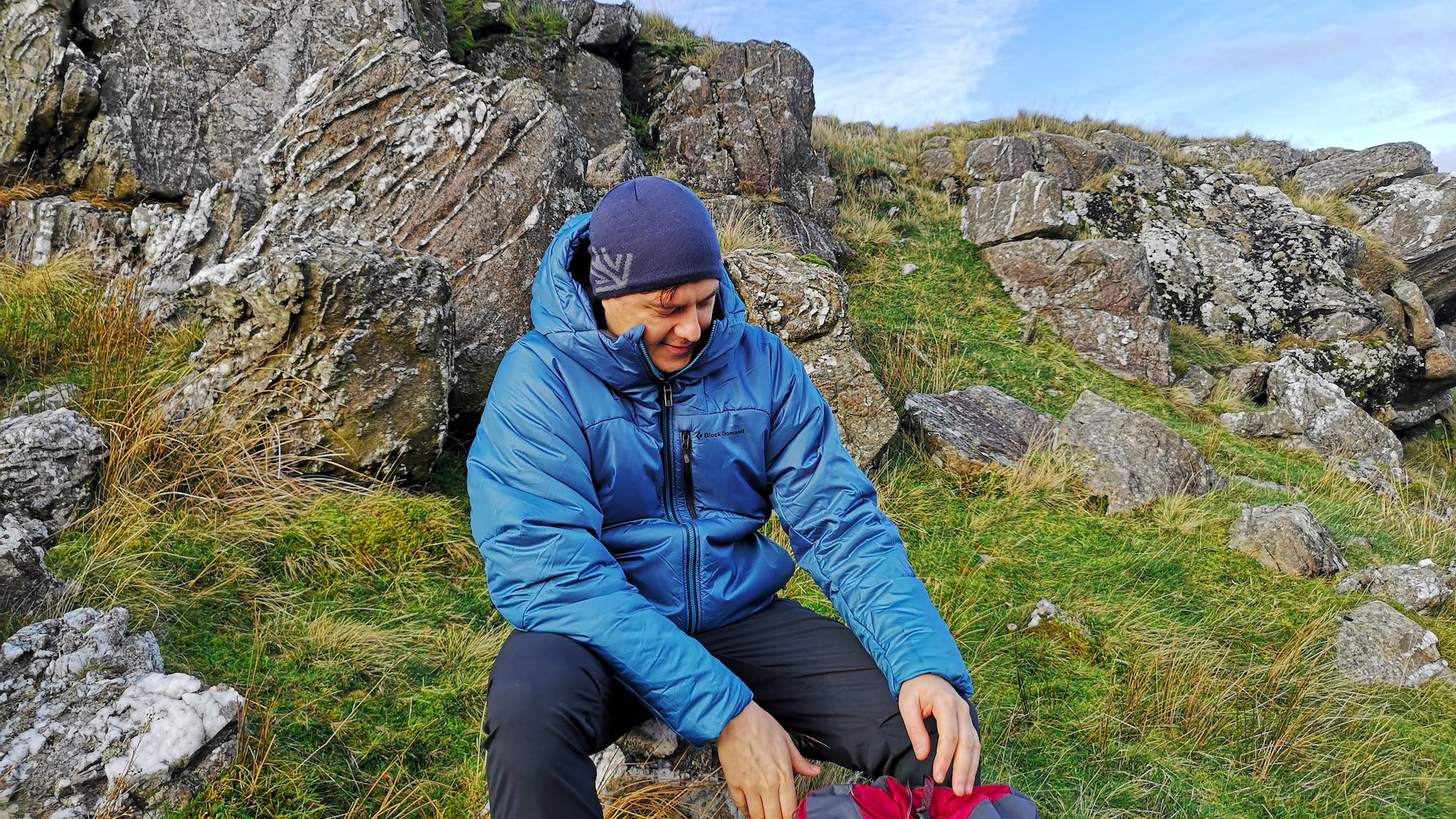
Specifications
Reasons to buy
Reasons to avoid
Sometimes, the simplest approaches are the most effective. Black Diamond’s Belay Parka – the latest version of their classic Stance jacket – is a great example. The design is straightforward: it’s a water-resistant ripstop shell packed with chunky, wadded synthetic sheet insulation. So, you get thick 200gsm Thermolite High-Loft fill throughout (including the hood and arms as well as the body), which means this jacket can cope with temperatures down to freezing, and even a few degrees below.
The generous cut makes this a great over-layer to throw on over everything else you happen to be wearing. It’s fuss-free and effective, especially once you cinch in the hood, which works very well whether you’re wearing a climbing helmet or not. You also get a practical two-way main zipper and large inner dump pockets to stash your gloves or a flask. And if you’re not belaying a partner, you’ll also love sticking your hands in the wonderfully cosy fleece-lined pockets.
Read our full Black Diamond Belay Parka review
The best eco option
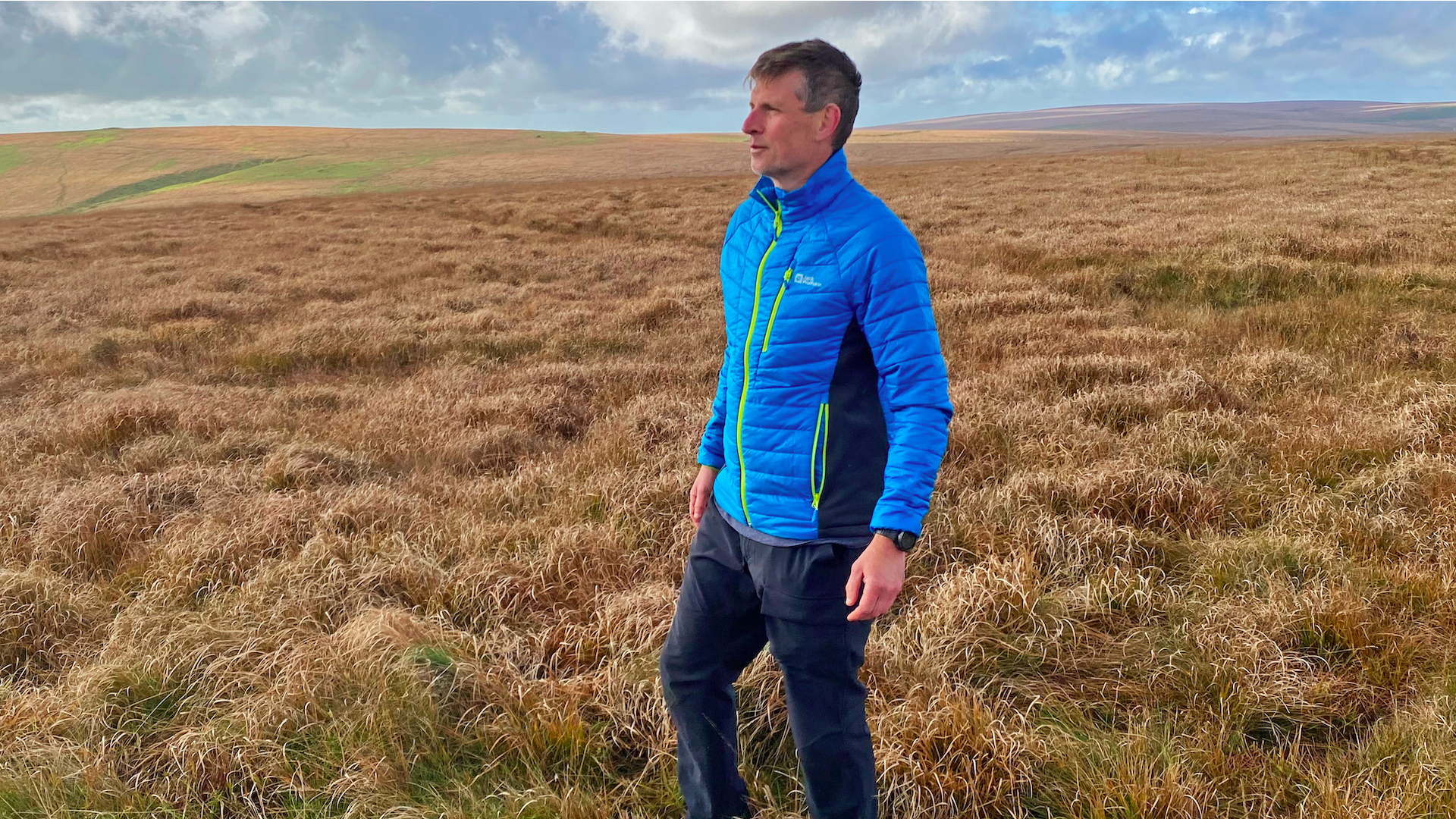
Specifications
Reasons to buy
Reasons to avoid
This stylish puffer jacket shields the wearer from the wind and supplies thermal protection that continues to work even when wet, thanks to the synthetic ‘Texatherm Pro Fluff’ fill, which is comprised entirely of pre-used polyester arranged in baffled panels across the coat to avoid clumping. The low bulk and trim cut means it works well as a warm midlayer, worn beneath a waterproof shell jacket in properly rainy or snowy conditions, but it also looks great and performs brilliantly as an outer layer in less soggy scenarios.
The length is good, providing coverage to the top of the bum region, and the hem can be easily adjusted and tightened to keep chilly drafts from creeping in. Strangely, the women’s version has a hood while the men’s doesn’t, but the high neck provides protection from drafts right up to chin level, and a zip garage guards against painful skin or beard snagging. The cuffs are elasticated, but there are no thumb hooks. Storage is reasonable on this coat, which has a pair of hip pockets and an angled chest pocket on the left breast, all of which securely zip shut.
The Routeburn’s real point of difference to other good synthetic puffer jackets, though, is the inclusion of stretchy fleece panels under each arm, which makes it ideal for dynamic activities such as scrambling, climbing and hiking over rocky and technical terrain. This material is also more breathable than the shell fabric, which adds to comfort levels in warmer conditions. While the Texashield shell fabric boasts water repellency, however, these fleece panels do absorb and hold water, so an outer layer is required in seriously soggy conditions.
Sustainably made with 100% recycled synthetic fill and shell material, this bluesign certified coat is perfect for environmentally conscious people who’d prefer not to wear garments made with animal products. Colorways differ depending on whether you’re in the US or the UK, but there’s a good selection on both sides of the Atlantic.
The best casual jacket

Specifications
Reasons to buy
Reasons to avoid
The Finisterre Nimbus is the brand’s bestselling women’s insulated jacket, and for good reason. There’s lots to like here, not least the jacket’s smart looks and a great selection of earthy colorways. The Nimbus is slim-fitting and bulk-free, and, like many of the best synthetic puffer jackets, its synthetic fill maintains most of its thermal properties even when it gets wet.
That said, it is still not as warm as some of the more padded jackets available, making it best suited for use as a light jacket on spring walks or for wearing under a shell on coastal hikes.
The Finisterre Nimbus is firmly in the casual camp, but the lack of bulk coupled with a great cut makes the Nimbus work brilliantly over a fleece or sweater and under a waterproof for daily wear. Like all Finisterre clothing, the Nimbus feels like great quality, and the jacket we have been testing still looks as good as new (and is still water-resistant) after months of regular outdoor wear.
There are other nice design touches here, such as a fleece-lined collar and an adjustable hood, and the Nimbus packs down into its own chest pocket, ideal for carrying with you on walks or on your daily commute, but it’s a pity the pockets aren’t zipped. In line with Finisterre’s ocean-loving ethos, the filling, material and even the zip are all fully recycled, which definitely gets our vote – if you want to put your money where your values are and buy recycled outdoor garments, this is a quality pick.
Read our full Finisterre Nimbus jacket review
Jacket | RRP | Weight | Fill | Best for |
Haglöfs Särna Mimic Hood | £170 (UK) / €210 (EU) | 476g / 16.7.oz | Mimic GOLD recycled polyester | General hiking and camping trips |
Napapijri Alvar Short Jacket | £265 (UK) | - | Recycled polyester synthetic insulation | Great for winter hiking and skiing |
Nathan Sports BFF Puffer Jacket | $200 (US) | 495g / 17.4oz | Sustainable 95% recycled polyester | General hiking and camping trips |
Arc'teryx Atom LT Hoody | $360 (US) / £300 (UK) | 215g / 7.6oz | Coreloft Compact insulation | Great versatility, suitable for all manner of outdoor adventures |
Highlander Lewis Synthetic Jacket | £100 (UK) | 350g / 12oz | Tecloft synthetic fill (100% polyester) | Midlayer for mountain missions or standalone for chilly days |
Páramo Torres Activo | £185 (UK) / €240 (EU) | 469g / 16.5oz | 60g Nikwax Insulator fill | Belay-style jacket for climbing and hiking missions |
Black Diamond Belay Parka | $300 (US) / £220 (UK) | 845g/1lb 13oz | ThermoLite HL Eco-Made synthetic fill (200gsm, 100% polyester) | Belaying, it's quite heavy for hiking |
Jack Wolfskin Routeburn | $169.95 (US) / £150 (UK) | 395g / 14oz | Texatherm Pro Fluff Primaloft (100% recycled polyester) | Great versatility, suitable for all manner of outdoor adventures |
Finisterre Nimbus | $228 (US) / £165 (UK) / €185 (EU) | 400g / 14oz | Recycled synthetic down | Very versatile, but not the warmest, so better for spring walks or under a shell |
How to choose the right synthetic puffer jacket
Choosing the best synthetic puffer jacket for your adventures will depend on quite a number of factors.
Weight is an important consideration. Generally speaking, the heavier a puffer jacket is, the more fill it contains and the warmer it will be. Insulated jackets are in their element when you need something to keep you warm when you're not exerting yourself too much. This could be while fixing up a morning coffee in camp, having a snack while hunkered down behind a windbreak on a gusty summit or going for a stroll downtown during the winter months.
During high intensity activities, you'll probably overheat while wearing a puffer, so it's likely that your jacket will remain stashed in your daypack during strenuous ascents or backcountry runs. So, if you're looking for a jacket for fast-paced mountain missions, something lightweight will be preferable. However, if you're a winter climber who expects to be stationary for long periods while belaying, you'll need something more substantial to keep you warm.
Fill
First of all, before you even opt for one of the above, you should consider whether to go for a synthetic fill or a natural down fill. The advantages of down are an excellent warmth to weight ratio and supreme packability, making it a good choice for serious expedition and wild camping use. However, it's unsuitable for vegans because ducks or geese are exploited in its creation. As well as this, there's no getting away from the fact that down jackets are expensive.
Synthetic puffers usually have the advantage of retaining their thermal qualities when wet, as well as being faster drying. However, they tend to be heavier and less packable than down jackets. Typically filled with polyester clusters that mimic the effect of down, they're generally cheaper. There's obviously the environmental factors to consider, as polyester will never biodegrade. A responsible buyer should look for jackets that contain recycled materials.

Design
The insulating fill is the main factor the determines the warmth to weight ratio of a puffer jacket. However, the design and construction of a jacket can also have a big impact on this.
Synthetic loose fills (sometimes called ‘short staple’ insulation) are made up of tiny individual clusters of fibres. In order to provide effective insulation, they need to be contained together in baffles, which are stitched panels into which the fill is blown. Without these, they'd all clump towards the bottom of the jacket and be of very little use indeed.
The shape, size and arrangement of these baffles all affect the capacity of the fill to loft or trap air, which is how a puffer jacket provides warmth. In addition, how they are constructed is important. Expedition-style jackets use box-wall construction, where each baffle is a self-contained brick-like shape. Lighter jackets employ stitch-through construction, where each baffle is a sort of fabric sandwich, trapping the insulating material between stitched seams. This is an easier method of manufacture that saves fabric and therefore weight, but it can also reduce loft and lead to cold spots at the stitching points.
Synthetic sheet insulation (sometimes called ‘continuous filament’ insulation) is a layer of polyester wadding housed between a face fabric and a lining. This is the method that is usually used for traditional belay jackets, which climbers use to stay warm when static, e.g. when belaying a climbing partner from a fixed position. Though some stitching is needed to keep this layer of wadding in place, it can usually be constructed in a much simpler way and is typically more windproof than a stitch-through jacket. It is not very breathable though, and also limits freedom of movement, making it less suitable for active use.
Many modern puffer jackets also now utilise a zoned or hybrid construction. This means that insulated areas are used alongside panels of more breathable or stretchy fabric – typically fleece – to make a puffer jacket more comfortable and provide better articulation for active use. You might find fleece inserts used along the sides or under the arms of a puffer jacket accordingly, with the insulation placed around the core. Hybrid construction can also enhance breathability, making for a more versatile garment that can be worn in a greater range of temperatures or for active as well as static use. Be aware, however, that if your primary need is for outright warmth, hybrid jackets are usually less windproof and less warm overall, since they have less insulation.
Fabrics
The face fabric of a puffer jacket is almost always made from a synthetic fibre, either nylon or polyester. These are both synthetic fabrics that are windproof but breathable. They are also comparatively quick drying and can be made water-resistant by applying a DWR (durable water repellent) finish. Their tight weave is also good at preventing the fine insulating fibres or down clusters of a puffer jacket from escaping. Generally, puffer jackets employ these fabrics in lighter weights than waterproof shells to ensure good packability. This limits their durability and toughness, although modern innovations such as ripstop threads can improve these characteristics. But generally, a puffer jacket is a more delicate layer than most other bits of outdoor clothing, and as a result it should be treated with greater care.

Features
The best synthetic puffer jackets usually come with an insulated hood and handwarmer pockets. These features are ideal when you are wearing the jacket as an outer layer but less essential if you plan to use the puffer as a mid-layer underneath a waterproof hardshell. In this case, a non-hooded jacket may be preferable and many of the best synthetic puffer jackets come with both options. Handwarmer pockets are great for casual walks but serious hikers may also want to look for chest pockets too. This is because handwarmer pockets can be rendered inaccessible by a backpack's hipbelt.
Fit
This is an important consideration, as it effects the thermal efficiency of your jacket. Too baggy and you'll have too much air for the jacket to try and warm up, while heat can also leak out through loose fitting cuffs, hems and hoods. However, if it's too snug fitting, the fill won't be able to loft effectively and your movements will compress the baffles, basically pushing that hard won hot air out of the jacket.
The size you opt for also depends on your intended use. If you're after a nicely-fitted jacket that looks stylish for après ski fun or for downtown, opt for your usual size. However, if you're planning to wear your puffer on top of multiple layers in the mountains, you've got to make sure it will fit over a base layer and a couple mid layers. When this is the case, you may want to go one size up.
- The best hiking boots: footwear for tackling tough terrain, tested and rated

Matt Jones has been testing kit in the field for nearly a decade. Having worked for both the Ramblers and the Scouts, he knows one or two things about walking and camping, and loves all things adventure, particularly long-distance backpacking, wild camping and climbing mountains. He’s based in Snowdonia and last year thru-hiked the Cambrian Way, which runs for 298 miles from Cardiff to Conwy, with a total ascent of 73,700 feet – that’s nearly 2½ times the height of Everest.
Advnture Newsletter
All the latest inspiration, tips and guides to help you plan your next Advnture!
An outdoors writer and editor, Matt Jones has been testing kit in the field for nearly a decade. Having worked for both the Ramblers and the Scouts, he knows one or two things about walking and camping, and loves all things adventure, particularly long-distance backpacking, wild camping and climbing mountains – especially in Wales. He’s based in Snowdonia and last year thru-hiked the Cambrian Way, which runs for 298 miles from Cardiff to Conwy, with a total ascent of 73,700 feet – that’s nearly 2½ times the height of Everest. Follow Matt on Instagram and Twitter.
- Julia Clarke
- Alex Foxfield
- Kim FullerAdvnture contributor

